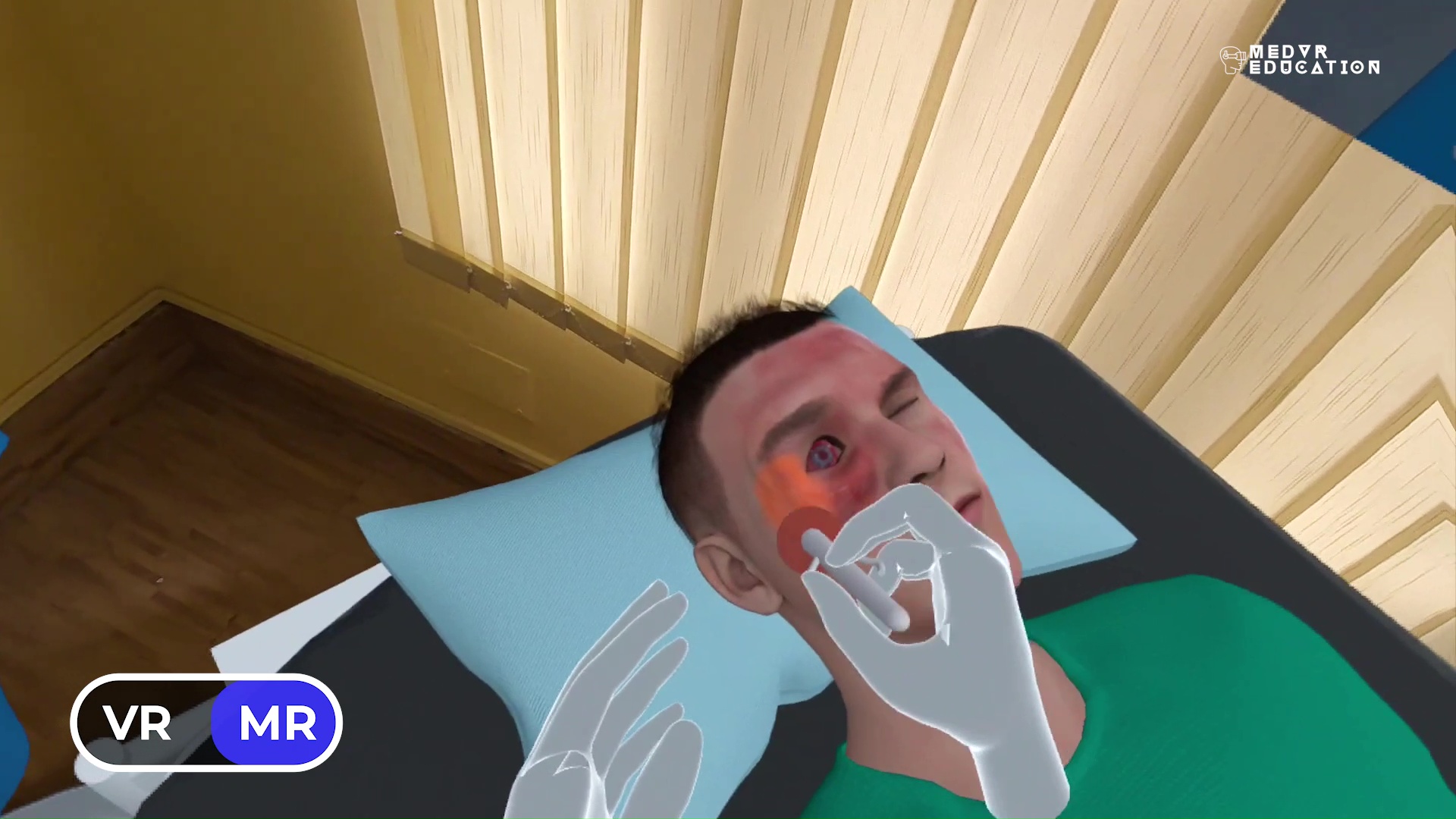Lateral Canthotomy
Marvin Jones, 21-years-old, was involved in a motor vehicle collision and is unconscious. He has suffered blunt force and facial injuries which could lead to increased intraocular pressure. You need to check the IOP using a tonometer, and if required, perform a lateral canthotomy.
This multiplayer VR session is designed to provide practice in assessing intraocular pressure and performing a lateral canthotomy procedure. The scenario is set in photorealistic environments to provide close-to-reality experiences.
- Use tonometer to examine affected eye for intraocular pressure
- Identify increased intraocular pressure in trauma-affected eye
- Use standard technique to prepare eye for lateral canthotomy
- Follow clinically approved steps to perform lateral canthotomy

- MInnes G and Howes D. Lateral canthotomy and cantholysis: a simple, vision-saving procedure. CJEM. 2002;4(1):49-52. At: http://www.cjem-online.ca/v4/n1/p49
Customize Your Program
Get rid of the editor. Adopt in-VR customization.
MedVR Education is bringing to you in-VR customization that will enable you to customize your procedural simulations by making selections from a range of feature choices.
- Select patient from a diverse background
- Choose preferred virtual environment
- Select equipment used in the procedure
- Modify difficulty level of the assessment mode
- …..many more to come

 Multi-playerSessions
Multi-playerSessions Physics-based Interactions
Physics-based Interactions
Core Skills Training

Performing Lateral Canthotomy
As part of this multiplayer session, the learner will use a tonometer to check the intraocular pressure. On witnessing significantly elevated pressure levels, the learner will proceed to perform a lateral canthotomy procedure. This will involve injecting a local anesthesia, cleaning of the incision site, compressing tissue along lateral canthus to rim of orbit, and finally cutting completely through the middle of the lateral canthal ligament. This scenario is set in a photorealistic environment and all necessary affordances are made available to assist learners in performing their tasks with efficiency and effectiveness.
Training
With prompts, guidance and affordances learners are hand-held through the process to practice the procedure in a virtual environment with a virtual patient.
- Photorealistic Virtual Environment
- Physics-based Interactions
- Learn by Doing
- Visual Affordances

Assessment
Test skills to perform the procedures from start to finish without prompts. An incorrect step will take the learner back to the start to start afresh.
- Live Scoring
- Instant Feedback
- Unlimited Practice Sessions
- LMS Integration







